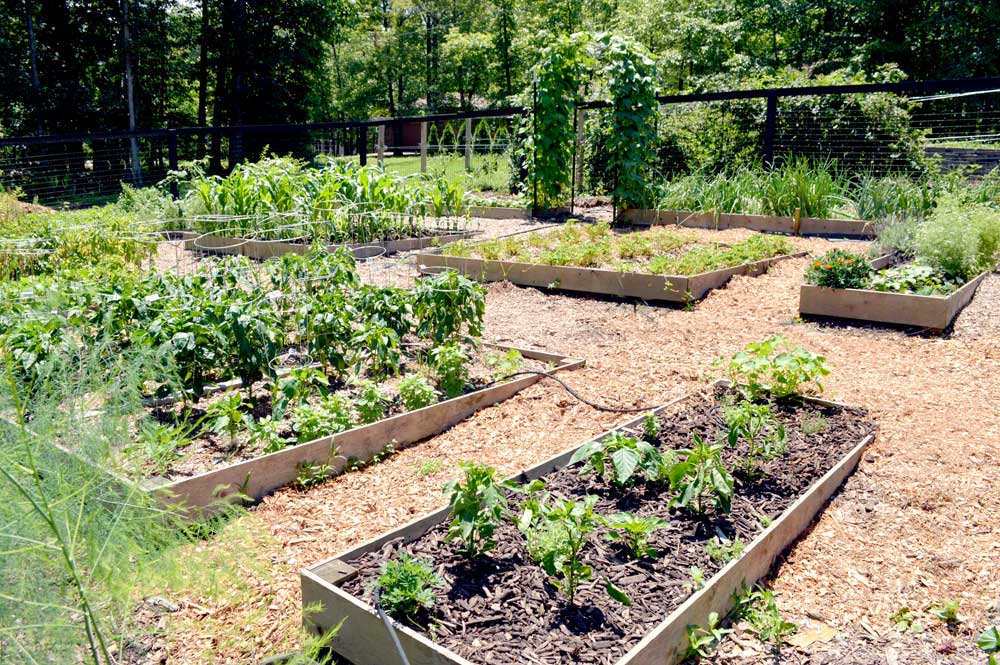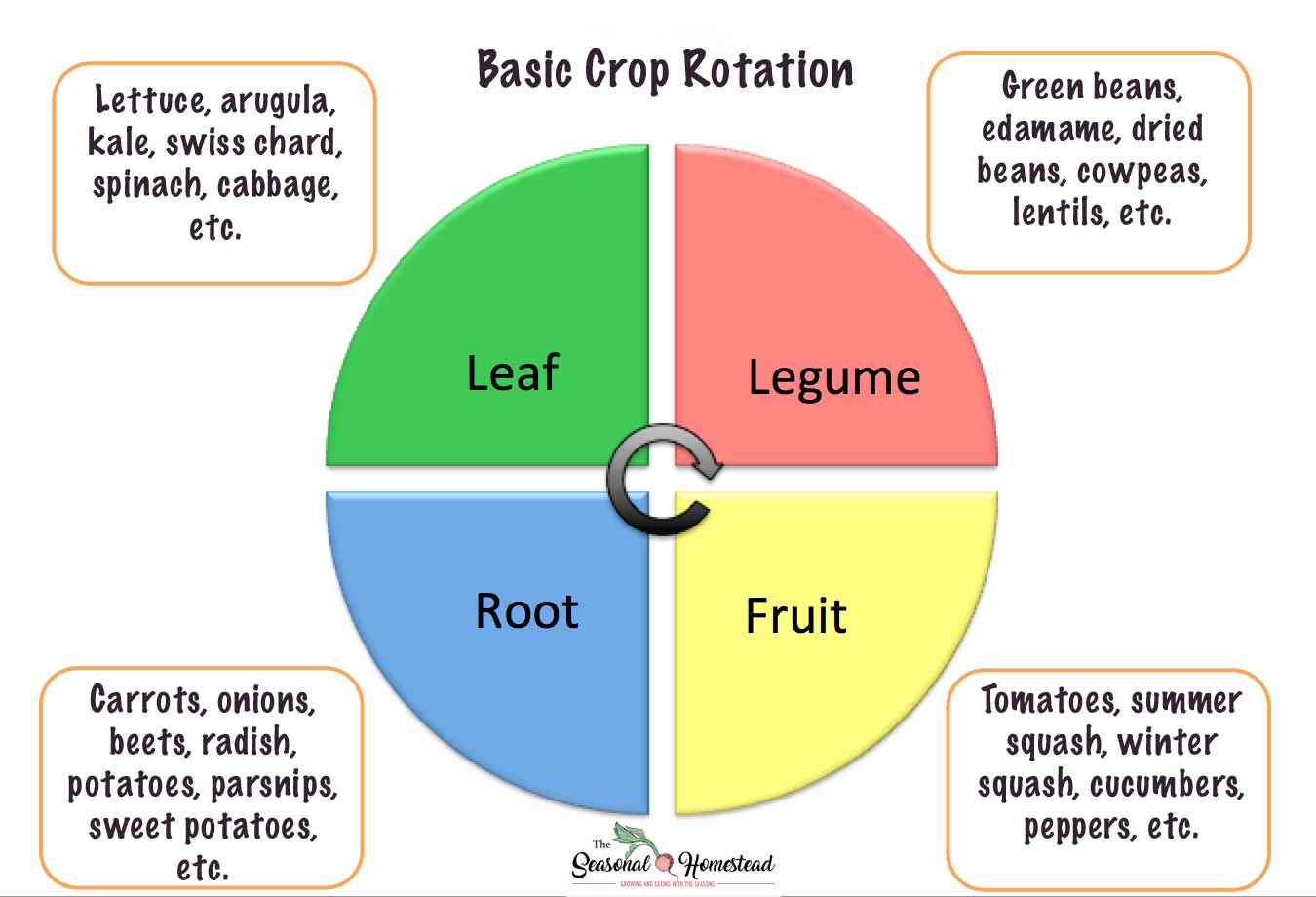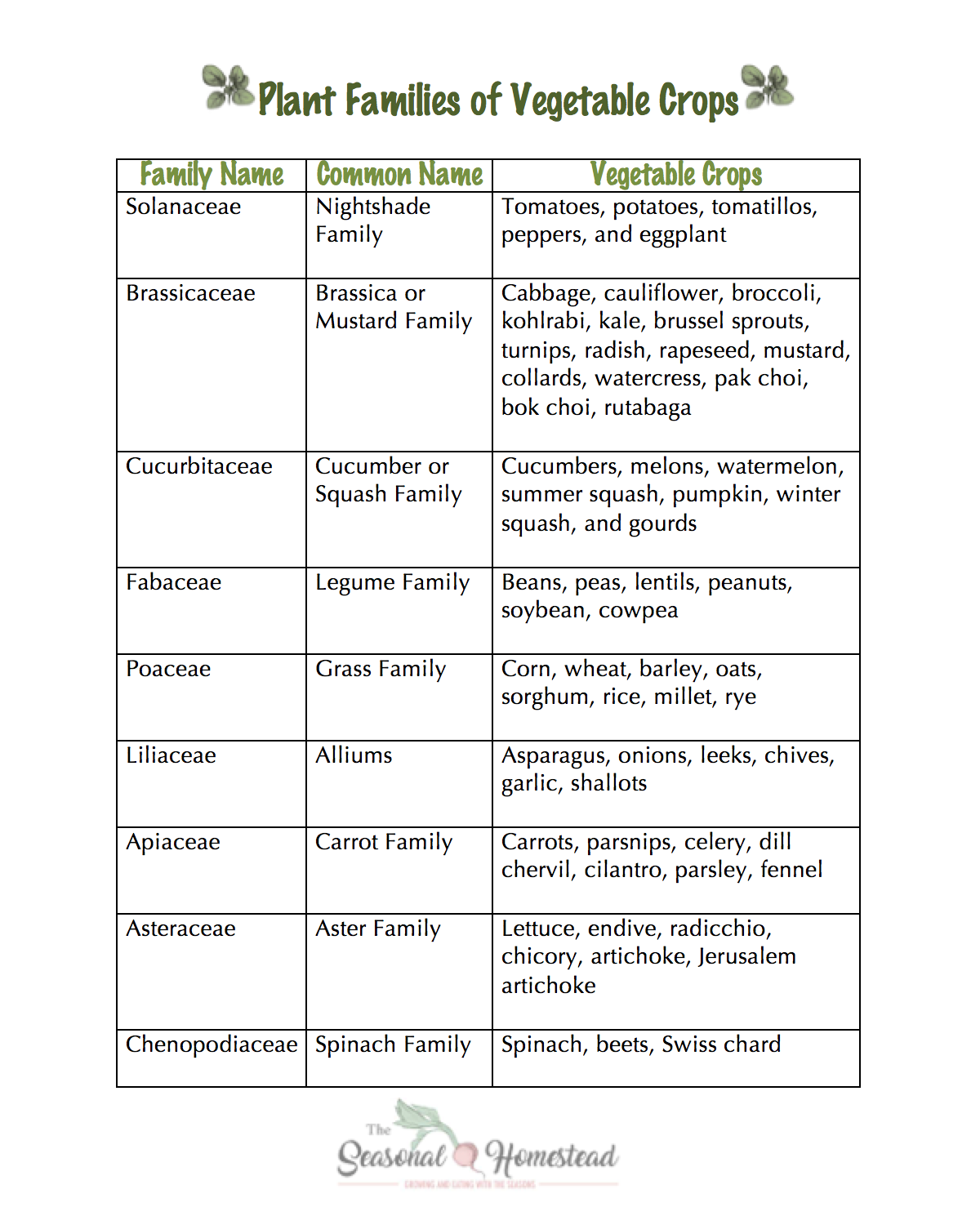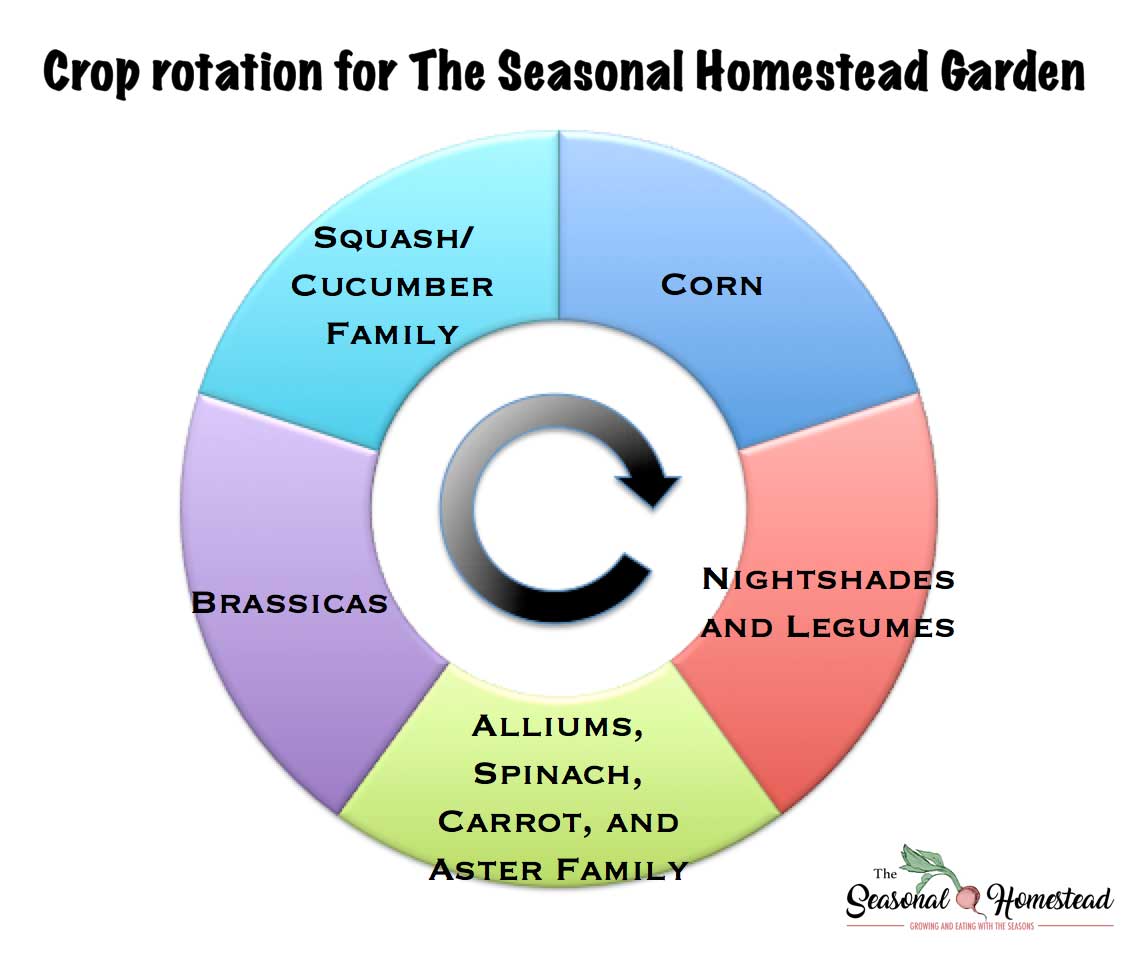Crop Rotation Ideas for an Organic Vegetable Garden
If you are growing an organic garden, prevention of diseases and pests is so important. We have several preventative tools to use. In last weeks post, I talked about the importance of cover crops in the home garden. The next step in maintaining a healthy garden is crop rotation. Crop Rotation means moving different crops around the garden in set time intervals. A common practice is to rotate crops yearly. However, if you have a long enough season to do some succession planting, rotating crops may happen more often.

Benefits of crop rotation include:
This post contains affiliate links. Here is the full disclosure.
-
Disease prevention
-
Allows for alternation of heavy feeding crops and light feeding crops
-
Fewer problems with insects and parasitic nematodes because it disrupts the life cycles of those organisms
-
Less weeds
-
Increased crop yields, especially when compared to a monoculture.
-
Allows plants with different root systems to penetrate the soil at different depths. Consequently, the soil structure is improved.
If your working towards growing more of your own food, chances are you grow a wide variety of vegetables. There are several ways to group together your plants and rotate crops. There isn’t only one correct way to rotate crops. You need to find out what works best for your own garden and develop your own personal plan.
Below is some ideas of ways you can rotate your crops.
#1 Leaf, Root, Fruit, Legume
Root vegetables -> leaf vegetables -> fruit vegetables -> legumes -> (then back to roots again)
This one is easy to remember, implement, and basic enough for beginners. However, you don’t get the benefit of alternating heavy feeders and light feeders. Also, there could be overlap of botanical families and consequently, a small possibility of building up pest and disease problems. All that said, I still think it would be a good place to start if other charts overwhelm you.

The above example would represent four plots in the garden during a given year. The following year everything would move over one plot. For example, the leaf group would replace the legume group in plot #2, the legume group would replace the fruit group in plot #3 etc.
-
Root examples: Carrots, turnips, parsnips, potatoes, garlic
-
Leaf examples: Lettuce, kale, swiss chard, spinach, cabbage
-
Fruit examples: Tomatoes, cucumbers, summer and winter squash, peppers
-
Legume examples: Green beans, dried beans, lentils, peanuts, soybean, cowpea
#2 Grouping Vegetables by Botanical Family
Another way to rotate crops is by botanical families. This is the way I personally rotate my crops.
What vegetables belong in which family? Below is a chart for your reference.

While crop rotations will vary based on what you are growing, I’m going to give you a sample of my own crop rotation that I follow (albeit somewhat loosely because of succession planting).
-
Corn
-
Nightshades and Legumes
-
Alliums, Carrots, Spinach and Aster Family
-
Brassicas
-
Squash/Cucumber Family

My garden when we first moved into our house five years ago was small and had exactly 5 beds. It was easy to rotate crops. Put simply, my crop rotation during one year would look like the chart below.

On the following year, everything would rotate over one garden bed. Easy peasy.
Since then, my garden has expanded and I’ve added lots of fruits and perennials. Crop rotation isn’t as simple as it once was.
My original garden plan for 2019 is published HERE, but I color coded this one below to show where my crop families are in my garden right now.



By the way… sweet potatoes are in gray because they belong to the Morning Glory family (not mentioned above). They are all family all their own and can go anywhere. Sweet potatoes are a light feeder and I usually will place them in a garden bed that had a heavy feeder in it the year before. I also make sure I don’t put them somewhere that had root crops the year prior.
You may be looking at my garden plan and the rainbow of colors right now and thinking, “whoa”. And probably not whoa in a good way. More like “whoa, I’m suddenly confused.” If so, I’m sorry!
A combination of intensive succession planting, intercropping, and random sized garden beds make my crop rotation a little crazy. And I shared my personal garden because crop rotation isn’t always as cut and dry as the charts make it seem.
In an ideal garden world, all the areas that are now light blue (squash family) would be purple (brassicas) next year. All the dark blue (corn) would become light blue (squash family) next year… you get the idea.
But I always run into two main problems. The first problem is that each crop group I grow takes up a different amount of space in the garden. My garden is probably 40% nightshades and legumes, 20% squash family, 15% corn and sweet potatoes, 15% brassicas, and 10% alliums.
The second problem I run into is I succession plant like crazy with different crops based on what season it is.
I have a few solutions to these problems but I’m not going to dive into that yet. It deserves a whole separate blog post- and goes well beyond crop rotation basics.
Lets get back to another example of crops rotated botanically to give you another idea for crop rotation in your own garden.

If you haven’t heard of Jean- Martin Fortier, he runs a market garden called Les Jardins de la Grelinette, in Quebec. He is also the author of the book, The Market Gardener (I highly recommend it!).
Jean- Martin’s rotation is based heavily on rotating heavy feeders and light feeders, the light feeders being greens and roots. You may also notice, he is rotating leaf vegetables with root vegetables. (After seeing his it makes me want to tweak my own crop rotation plan!)
The chart above shows 10 garden plots planted every year. The following year everything rotates over a plot. While this is for a market garden, it can definitely be applied to the home garden as well.
Have a very small garden you want to rotate crops in? No problem.
A word to those with a very small garden and just a few raised beds. You can still do crop rotation in a small area, just divide the space you have and rotate. Say you have two 8×4 foot garden beds for example. I would divide that space into 4 groups, each 4×4 ft, and rotate crop families in those areas.
Just remember any crop rotation is better than none. If this seems like too much or too confusing I would at least make sure your nightshades (these carry the most disease and pest problems) don’t get planted in the same soil for another four years. I did that for many years when I was a beginner and my garden was just fine!
As always, you’re welcome to leave me a comment if you have a questions 🙂
Conclusion
-
Crop Rotation means moving different crops around the garden in set time intervals
-
There are many methods of crop rotation, use what works for you and your garden
-
An easy method of crop rotation is the Leaf, Fruit, Root, Legume rotation
-
Another method of crop rotation is grouping by botanical families
-
You can still rotate crops even in a small garden
-
Any crop rotation, even haphazardly done, is better than none.




